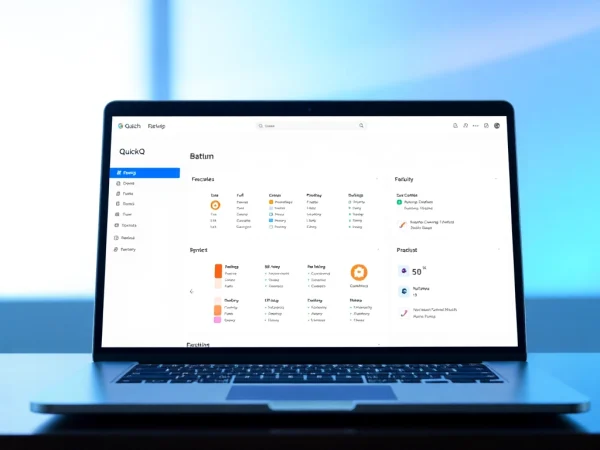Essential Thermal Management Materials for Effective Heat Dissipation in Electronics
Understanding Thermal Management Materials
In the realm of electronics, effective heat management is vital for maintaining performance and prolonging device life. This is where thermal management materials come into play. These materials are designed to efficiently dissipate heat, ensuring that electronic components operate within safe temperature limits. This article will explore everything you need to know about thermal management materials, their types, importance, benefits, selection criteria, and future trends.
What Are Thermal Management Materials?
Thermal management materials encompass a variety of products utilized in the electronics industry to improve heat dissipation from electronic devices. These materials serve as a bridge between heat-generating components and their heat sinks or other cooling systems, facilitating effective heat transfer. The goal is to maintain operational efficiency by preventing overheating, which can lead to performance degradation, shortened lifespans, and even component failure.
Types of Thermal Management Materials
Thermal management materials come in several forms, including:
- Thermal Interface Materials (TIMs): These materials fill air gaps between heat-generating components and heat sinks to enhance thermal conductivity.
- Gap Fillers: Often used in applications where there are irregular surfaces, gap fillers conform to the space between components to improve heat transfer.
- Phase Change Materials (PCMs): These materials absorb and release thermal energy during phase transitions, providing efficient thermal regulation.
- Thermal Adhesives: Used to bond components while facilitating heat transfer, thermal adhesives can replace mechanical fasteners in some situations.
Importance in Electronic Applications
The importance of thermal management materials in electronic applications can hardly be overstated. As devices become smaller and more powerful, the heat they generate increases, and effective thermal management becomes crucial. By utilizing thermal management materials, manufacturers can:
- Enhance device reliability and performance.
- Meet stringent regulatory requirements regarding safety and functionality.
- Extend the operational life of electronic components.
Key Categories of Thermal Management Materials
Thermal Interface Materials
Thermal Interface Materials are essential in improving heat transfer between components and heat sinks. Typically, TIMs are made from materials like thermal grease, pads, and phase change materials. The performance of TIMs is quantified by thermal conductivity metrics, which dictate how efficiently they can transfer heat. High-performance TIMs can achieve thermal conductivities of over 10 W/m·K, making them ideal for high-heat applications.
Gap Fillers and Their Applications
Gap fillers fill spaces between components and heat spreaders, ensuring maximum contact surface area for heat transfer. They are crucial in applications where traditional thermal interface materials may not fit due to uneven surfaces. Gap fillers can be silicone-based or include ceramic fillers which improve thermal characteristics significantly.
Phase Change Materials Explained
Phase Change Materials offer a unique advantage by absorbing excess heat during the transition from solid to liquid and releasing it as they solidify. This ability provides a stable thermal environment for sensitive electronic components and is especially useful in applications where thermal spikes are prevalent, such as in power electronics or LED lighting systems.
Benefits of Using Thermal Management Materials
Enhanced Heat Dissipation
The primary benefit of thermal management materials is enhanced heat dissipation. In devices where space is limited, effective thermal management is critical to avoid overheating. By implementing suitable thermal management solutions, such as TIMs or gap fillers, manufacturers can improve their products’ heat dissipation capabilities, thus ensuring optimum performance.
Reduced Component Damage
Overheating can cause significant damage to electronic components, leading to failures and costly repairs. Thermal management materials help mitigate these risks by ensuring that heat is effectively transferred away from sensitive areas, reducing the likelihood of thermal-induced damage.
Improved Device Longevity and Performance
By preventing overheating and effectively managing heat, thermal management materials directly contribute to the longevity and performance of electronic devices. This reliability is particularly critical for applications in automotive, aerospace, and medical devices, where failure can result in catastrophic outcomes.
Choosing the Right Thermal Management Materials
Factors to Consider
When selecting thermal management materials, several factors must be taken into account:
- Thermal Conductivity: The primary measure for thermal interface materials, higher thermal conductivity indicates better heat transfer efficiency.
- Viscosity: The viscosity of materials affects their application and how well they conform to surfaces.
- Temperature Range: Ensure the selected material can sustain the operating temperature of the applications.
- Mechanical Properties: Consider the flexibility and hardness of the material, particularly in applications with differing thermal expansion rates.
Common Challenges in Selection
Some common challenges manufacturers face when selecting thermal management materials include compatibility with other materials, cost constraints, and the need for custom solutions for unique applications. Thorough testing and analysis are recommended to overcome these obstacles effectively.
Best Practices for Implementation
To ensure optimal performance of thermal management materials, follow these best practices:
- Implement rigorous testing protocols to evaluate material performance in real-world conditions.
- Keep up with the latest developments in thermal management technologies to ensure competitiveness.
- Utilize simulations and modeling techniques to predict thermal performance before production.
Future Trends in Thermal Management Materials
Innovations in Material Technology
The field of thermal management materials is evolving rapidly. Innovations include the development of new composites and nano-materials that exceed traditional thermal conductivity benchmarks. For instance, graphene-based materials demonstrate superior thermal properties and promise breakthroughs in heat management for high-performance applications.
Impact of Legislation and Standards
As environmental concerns continue to pressure the electronics market, legislation and regulations are steering manufacturers towards more sustainable materials. This shift presents opportunities for developing eco-friendly thermal management solutions crafted from biodegradable or recyclable materials.
Market Trends and Opportunities
The demand for thermal management materials is expected to grow as electronic devices become increasingly diversified. Industries such as automotive, telecommunications, and consumer electronics are projected to drive market growth. Opportunities exist for companies that innovate within this space, particularly as the push for electric vehicles and renewable energy sources rises.









